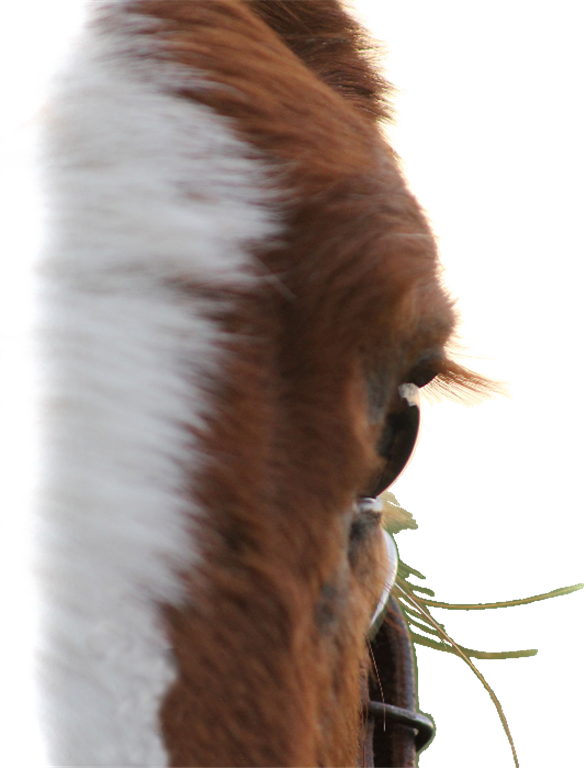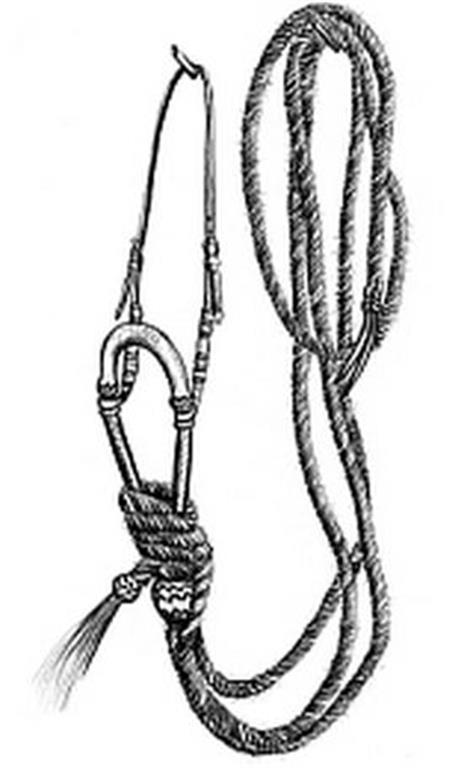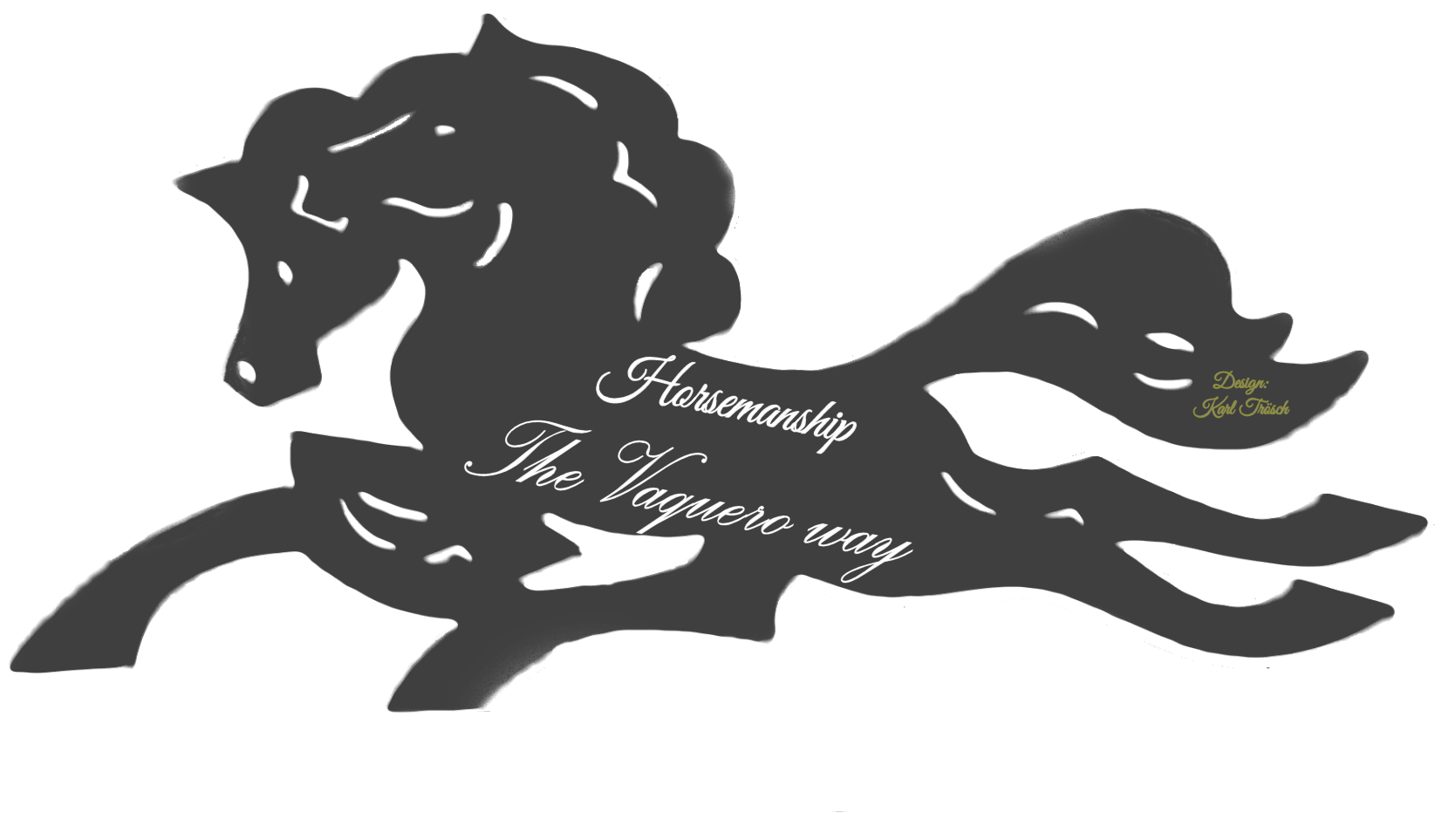

The horsemanship my father, Karl Trösch (+1982), instilled in me from a young age was built on four pillars: observation, knowledge, empathy, and feel. For him, working with horses wasn’t about control—it was about connection, and treating them with the respect they inherently deserve.
His approach came naturally to him, and it was non-negotiable. He taught me to understand the horse in the present moment, to listen with more than just my ears, and to act with intention.
I call this way of working “Quality Horsemanship” to differentiate it from the abundance of techniques and systems widely promoted today. Quality Horsemanship isn’t about shortcuts or tricks; it’s a philosophy. It means guiding the horse through learning at their own pace, communicating in a way they understand, and building trust through respect and clarity. It’s about educating, working, and training with the horse in a partnership—not by force, but by mutual understanding.
In my father’s time, terms like “horsemanship” or “natural horsemanship” were unheard of, especially in Europe.
His approach was often criticized for being too gentle, but he taught me to think for myself and act in a way that felt right, even if it wasn’t popular. His teachings continue to shape my path, and I’m committed to honoring his legacy by sharing this philosophy with those who seek a deeper connection with their horses.

Perception and communication—these are at the heart of everything when it comes to working with horses.
Learning to read, understand, and respond to a horse’s signals isn’t just beneficial—it’s essential. It ensures your safety, elevates the quality of your horse training, and most importantly, it’s key to your horse’s well-being.
As the caretaker, your responsibility goes beyond feeding and grooming. Your ability to communicate clearly directly impacts your horse’s sense of safety. Being a flight animal, the horse is naturally stressed by unclear or unpredictable situations. Clear communication is the bridge that keeps your horse grounded, calm, and confident in your partnership.
Improving your horsemanship skills enhances every interaction. Your horse becomes more responsive, more trusting. Understanding their subtle signals allows you to create the connection that’s needed for true clarity in your communication—a connection that can transform your riding, your handling, and your relationship with the horse.

Horses, in their natural environment, are entirely self-sufficient. They don’t rely on humans for food or protection. Over millions of years, they’ve evolved into creatures perfectly suited to survive and thrive in the wild.
Communication is at the heart of their survival. Within a herd, horses maintain a constant dialogue, expressing everything from joy to serious warnings. This intricate language, a combination of learned behaviors and instinctual responses, has ensured their survival over millennia.
Herds operate under a hierarchy crucial for their safety and cohesion. At the top is the lead mare, often the most experienced rather than the strongest. Her responsibilities are significant: deciding where the herd grazes, when to move, and leading the herd in moments of danger. She earns respect from the group, not just for her authority but also for her role as their protector and guide. Over time, if her strength wanes, another mare will rise to take her place, often through confrontations that reflect the natural order.
The stallion’s role is equally demanding, though it comes with its own set of challenges. His primary duty is to safeguard the herd from rival stallions, often engaging in fierce battles to maintain his position. He ensures the herd stays together during their movements and stands ready to defend them against predators, sometimes at great personal risk. His ultimate reward is the opportunity to pass on his genes to the next generation.
A horse’s intelligence is one of its greatest strengths. In the wild, survival often depends on how quickly it can evaluate a situation. A horse doesn’t have the luxury of deliberating over a lurking predator—it must act swiftly and decisively. This sharp, instinct-driven intelligence is a cornerstone of their existence and a trait that should never be underestimated.

One of the most striking differences between humans and horses lies in their evolutionary roles: humans are omnivores and natural predators, while horses are prey animals, designed for flight. This fundamental distinction shapes the dynamics between the two species.
Humans, as hunters, developed forward-facing eyes to focus on prey—a trait shared with other predators. Our movements, too, mirror those of natural hunters, which horses instinctively recognize. In their early encounters with humans, horses were often prey. Over time, however, humans harnessed the power and endurance of the horse, transforming it into a partner for travel, farming, and even warfare. Without the horse, the expansion of human civilization would have been significantly slower.
Horses, in contrast, evolved for survival on open plains, living freely without human intervention. Yet, they’ve displayed an extraordinary ability to trust humans, even to the point of charging into battle alongside us. This trust—a prey animal teaming with a predator—underscores the depth of the horse-human bond and the immense responsibility borne by the horseman.
True horsemanship respects this trust. For example, in working with a psychologically traumatized horse, the animal’s innate drive for survival and ability to adapt often allow it to heal more quickly than a human might in a similar situation. By practicing honest, compassionate horsemanship, we honor the horse’s intelligence, resilience, and willingness to connect.
The horse’s evolution as a prey animal and its profound trust in humans remind us of the responsibility we carry to nurture and respect this bond. It’s a privilege that demands our care, integrity, and commitment.

The love I have for horses and dogs has been with me since childhood. Life, like for everyone, presented countless crossroads where I had to decide: do I choose the easy path or the one that feels right?
Taking the easy way was often tempting, but every time I gave in, the outcome never resonated. It left me questioning if I’d honored what truly mattered.
My father was my compass, teaching me values and shaping the foundation of my horsemanship. He taught me to pause and think before acting, to speak only when I truly understood, and most importantly, to look deeper—to see into the horse rather than just at it.
Over time, his lessons unfolded their full meaning. They became my guide, helping me develop an approach grounded in understanding and respect for the horse. He showed me how to see the small signals, to notice what the horse is offering, and to respond with clarity and compassion.
His philosophy—to help those seeking to learn—has become my own. I believe these lessons, refined through my experiences over the years, are worth sharing with anyone who wants to truly connect with horses.
My style of horsemanship is strongly rooted in the Californian Vaquero tradition, where patience, finesse, and respect for the horse’s development are paramount. This approach emphasizes a strong partnership, achieved through trust, mutual understanding, and clear communication. It reflects my belief in valuing the journey of training as much as the result.
I know I can’t change the world, but I can make a difference for the horse in front of me—and that’s enough.

Every so often, someone asks me, “Who do you recommend as a good horseman?”
It’s a tough one to answer because it’s not just about finding someone who’s good—it’s also about finding someone who fits what you need. So, most times, I try to sidestep the question. It’s not that I lack an opinion (far from it), but because the horse world is full of personalities, and critiquing them publicly feels unnecessary.
Still, if pressed for an honest answer, here’s how I see it:
When I need guidance, the first thing I ask myself is, What do I need to learn, and who can teach me that? Let’s say I start with a quick online search for “horsemanship.” The sheer number of results is staggering, with every kind of “professional” flaunting their methods and levels. Many of these feel like “quick-fix” solutions. They remind me of those books you see: [Something] for Dummies. But the truth is, horsemanship isn’t something you can condense into a checklist or a branded method. It’s far too nuanced and personal for that.
I’ve seen practices where people chase horses in round pens until they’re too tired to resist, calling the resulting compliance a “join-up.” Or worse, the trainer basks in the praise for “fixing” the horse when all they’ve really done is exhaust it. This kind of thing doesn’t help the horse or the owner who asked me for advice. In fact, it only deepens misunderstandings.
So where does that leave you if you’re searching for someone to help? Start by asking yourself these tough but necessary questions:
These questions aren’t easy, and my approach might come off as blunt. But if you’re still reading and nodding along, then we’re already on the right track.
When you’ve answered these questions honestly, you’ll have a clearer picture of the kind of mentor you need. A good horseman will suit not only your horse but also your learning style. They should teach in a way that resonates with both you and your horse, creating harmony instead of stress.
You might be surprised—sometimes the most valuable mentors aren’t the ones chasing the spotlight or charging the highest fees. What truly matters, regardless of discipline, is that the horse remains at the center. Your ability to find quality horsemanship begins with your willingness to be honest with yourself.

The Legacy of the Vaqueros
The Vaqueros of California trace their roots back to Mexico, where their unique approach to horsemanship first began. In the late 18th century, as Spanish settlers expanded into the fertile lands of coastal California, they established missions and settlements from San Diego to Sonoma. Along with the missionaries came cattle—and the need for skilled horsemen to manage them. Thus, the Vaqueros arrived, bringing with them a rich tradition of equestrian knowledge.
At first, the indigenous people of California were not allowed to ride horses. But as the demand for skilled labor grew, the missionaries began teaching Native Americans to ride and manage cattle. The indigenous people, with their natural athleticism and rhythm, quickly excelled in this work, blending their instincts with the Vaquero methods. Over time, the Vaquero culture became a melting pot of traditions, with influences from Native Americans, Mexicans, and settlers of European descent. What defined the Vaquero, however, was not ethnicity but their shared dedication to the art of horsemanship.
The Philosophy of the Vaquero
The Vaquero’s pride lay in the softness and precision of their horses. Their approach was built on patience and understanding, with horses started only after the age of four, once they were fully developed physically and mentally. Training often spanned seven to ten years, emphasizing groundwork and trust-building long before a rider mounted. This allowed the horse to develop confidence, ensuring that both horse and rider could rely on one another in the vast, open plains where they worked cattle—and occasionally even roped grizzly bears, a feat requiring immense trust and precision.
The Vaquero’s methods prioritized clear, gentle communication. Young horses were started in a hackamore—a bitless system—so they could learn without discomfort. This required the rider to have exceptional skill and clarity, as the horse responded to subtle signals rather than force. Groundwork played a pivotal role, with the horse learning maneuvers on the ground before ever carrying a rider. The principle was simple but profound: if the horse struggled, it was never the horse’s fault but a reflection of the trainer’s skill and empathy.
The Tools and Techniques
 Vaqueros were resourceful, crafting much of their own tack. The hackamore, consisting of a bosal and mecate, was often handmade, as was the reata, a rawhide lasso used for roping. These tools were not just functional but an extension of the Vaquero’s artistry and connection to their horse.
Vaqueros were resourceful, crafting much of their own tack. The hackamore, consisting of a bosal and mecate, was often handmade, as was the reata, a rawhide lasso used for roping. These tools were not just functional but an extension of the Vaquero’s artistry and connection to their horse.
The essence of Vaquero horsemanship is captured in the concept of “feel”—a term championed by master horsemen like Tom Dorrance, Bill Dorrance, Ray Hunt, and Buck Brannaman. This “feel” is not a vague notion but the cornerstone of a true partnership, where horse and rider move in harmony, guided by mutual trust and understanding.
The Heart of Horsemanship
For the Vaquero, the greatest reward for a horse was not a treat or a carrot but the peace, praise, and reassurance the rider could offer. The bond between horse and human, cultivated through dedication and respect, was the ultimate goal—a partnership that transcended the physical and touched the soul.
If you’d like to explore this timeless approach to horsemanship, I’d be happy to share more. Feel free to contact me!

